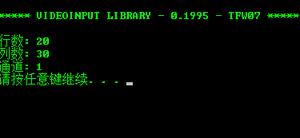Pythonsplit()函数用法及简单实现

在Python中,split() 方法可以实现将一个字符串按照指定的分隔符切分成多个子串,这些子串会被保存到列表中(不包含分隔符),作为方法的返回值反馈回来。
split函数用法
split(sep=None, maxsplit=-1)
参数
sep – 分隔符,默认为所有的空字符,包括空格、换行(\n)、制表符(\t)等。
maxsplit – 分割次数。默认为 -1, 即分隔所有。
实例:
// 例子String = 'Hello world! Nice to meet you'
String.split()
['Hello', 'world!', 'Nice', 'to', 'meet', 'you']
String.split(' ', 3)
['Hello', 'world!', 'Nice', 'to meet you']
String1, String2 = String.split(' ', 1)
// 也可以将字符串分割后返回给对应的n个目标,但是要注意字符串开头是否存在分隔符,若存在会分割出一个空字符串
String1 = 'Hello'
String2 = 'world! Nice to meet you'
String.split('!')
// 选择其他分隔符
['Hello world', ' Nice to meet you']
split函数实现
def split(self, *args, **kwargs): # real signature unknown"""
Return a list of the words in the string, using sep as the delimiter string.
sep
The delimiter according which to split the string.
None (the default value) means split according to any whitespace,
and discard empty strings from the result.
maxsplit
Maximum number of splits to do.
-1 (the default value) means no limit.
"""
pass
上图为Pycharm文档
def my_split(string, sep, maxsplit):ret = []
len_sep = len(sep)
if maxsplit == -1:
maxsplit = len(string) + 2
for _ in range(maxsplit):
index = string.find(sep)
if index == -1:
ret.append(string)
return ret
else:
ret.append(string[:index])
string = string[index + len_sep:]
ret.append(string)
return ret
if __name__ == "__main__":
print(my_split("abcded", "cd", -1))
print(my_split('Hello World! Nice to meet you', ' ', 3))
以上就是Python-split()函数用法及简单实现,希望能帮助到你哦~
(推荐操作系统:windows7系统、Python 3.9.1,DELL G3电脑。)
以上是 Pythonsplit()函数用法及简单实现 的全部内容, 来源链接: utcz.com/z/541880.html






